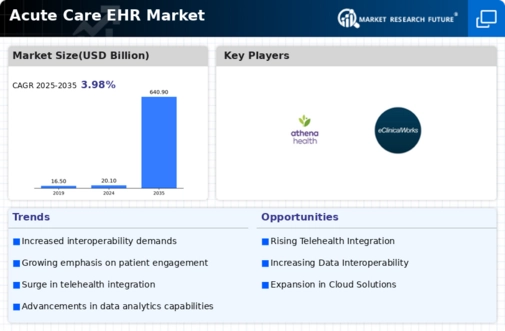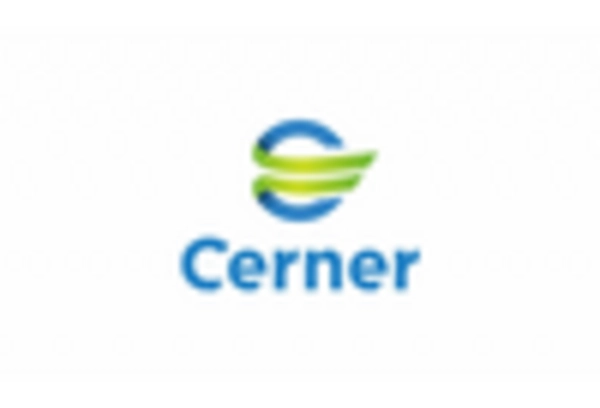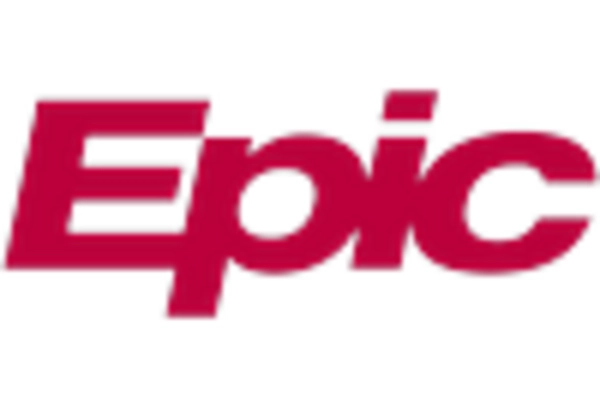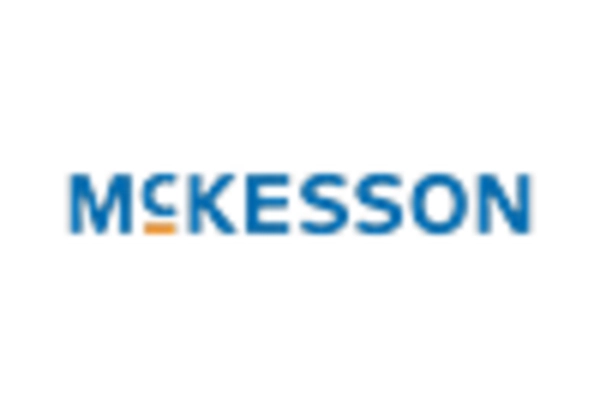Market Share
Acute Care EHR Market Share Analysis
Some acute care EHR businesses prioritize compatibility with many health systems. Successful providers must ensure their systems are seamlessly integrated with hospitals, laboratories, and other healthcare IT platforms. This allows complete patient data management. EHR systems with extensive clinical recording capabilities should be offered. Implementing technologies that quickly and accurately capture patient encounters, treatment plans, and medical histories improves patient care and workflows. Successful companies adopt electronic health record (EHR) systems that may be customized to suit acute care demands. This may include surgical suite, critical care unit, or emergency department-specific components. This would make the system adaptable to each hospital's clinical needs. Interfaces must be user-friendly and suited to medical professionals when implementing electronic health records. Companies that invest in intuitive designs and efficient processes boost acute care facility efficiency. These expenditures reduce the learning curve for healthcare workers, increasing efficiency. Businesses prioritize real-time data availability and decision help tools to stand out from competition. Electronic health records (EHRs) for acute care allow medical personnel to make fast, educated choices by providing rapid access to patient data and clinical decision support systems. In acute care, mobility is essential, thus companies provide mobile-friendly EHR solutions. Since medical practitioners may access patient information at the moment of service, their responsiveness and operational efficiency improve. Successful market companies prioritize medical diagnostic and imaging equipment integration. These electronic health record (EHR) systems seamlessly integrate radiographic images, laboratory data, and diagnostic reports into patient records, improving clinical information and decision-making. Telehealth is becoming more important in acute care, thus companies are using their EHRs as platforms for telehealth integration. This includes components that allow remote consultations, virtual patient monitoring, and transparent, unimpeded information flow between patients and healthcare practitioners. Due to the sensitivity of patient data, stringent privacy and security rules are essential. Businesses invest in EHR systems with enhanced encryption, access controls, and healthcare data privacy compliance. This builds patient-provider trust. Companies give ongoing training and support for their goods and services because they understand user competency. These programs enable healthcare personnel stay current on electronic health records (EHR) capabilities to ensure optimal utilization and minimize interruptions in acute care environments. Scalability is crucial to market positioning. Some organizations provide scalable EHR solutions for increasing healthcare systems and hospitals. These firms provide these apps. This ensures that the solutions may be modified to the firm's changing needs. Strategic partnerships with institutionally hired healthcare practitioners are a popular market positioning strategy. Companies may link their EHR systems into the healthcare ecosystem via partnerships. This improves communication and data exchange between healthcare facilities. Firms seek compliance with rules and certifications to meet industry standards. Electronic health record (EHR) systems that comply with Meaningful Use (MU) and are certified by key healthcare agencies are essential for market confidence and adoption. It's normal to evaluate cost issues. Some firms provide economical and cost-effective electronic health record (EHR) systems. This might include scalable pricing structures or subscription-based services that make electronic health record technology available to more acute care providers. This would be good. The most successful companies in an industry continually hunt for new markets to grow into and expand globally. For effective market growth, one must understand local healthcare demands, compliance requirements, and electronic health record system adaptation to match international standards. Effective market expansion requires this insight.

















Leave a Comment